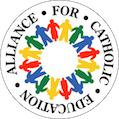How to Plan a Multi-Cultural Liturgy
Eight Tips for Planning Multicultural Liturgies
- Invite students to proclaim the word of God in their native language. It’s okay if not everyone understands it.
- Avoid redundancy. In other words, don’t proclaim each reading in both Spanish and English. This is not liturgically sound and makes for an especially long Mass.
- Consider teaching your students how to say small parts of the Mass in other languages. The Our Father and sign of peace are good places to start. Kids like and need repetition. Don’t just say the Our Father in Spanish for a single Mass. Commit to saying it every school liturgy for a month or two (or more!).
- Don’t overlook smaller language minorities in your school like Filipinos, Congolese, Vietnamese, etc..
- Art and symbols are important. Are there images of holy men and women in all of God’s colors around the chapel? Consider starting with images of Our Lady of Guadalupe, St. Martin de Porres, St. Peter Claver, Blessed Kateri Tekakwitha, and Mother Theresa (Bee Still Studios sells magnificent multiethnic religious imagery – www.beestill.org)
- Use your students’ families as a resource. Ask parents and grandparents if you can borrow a textile with which to decorate the sanctuary. Perhaps a family has a home altar from which you could borrow candles or religious art. Ask families for ideas about how to incorporate their rich liturgical practices into school Masses. Invite these families to attend the Mass!
- Regardless of whether or not your school is ethnically diverse, ALL kids should see holy men and women of different cultures. Similarly, ALL children should come to discover that different cultural expressions of faith add to our own understanding of God. Just think about what it would be like to never have sung Amazing Grace!
- Remember that simple changes (like giving the sign of peace in Spanish or using a culturally


